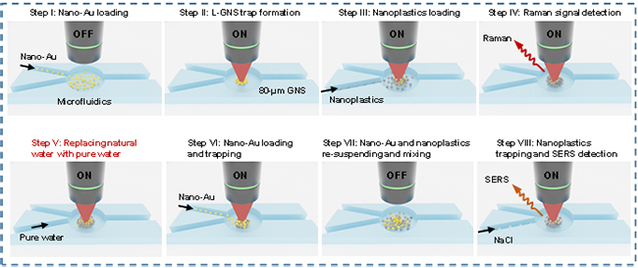Associate Professor Shi Xiaofeng from the Faculty of Information Science and Engineering and the Engineering Research Center of Advanced Marine Physical Instruments and Equipment, and Professor Zhao Jian from the College of Environmental Science and Engineering and the Key Laboratory of Marine Environment and Ecology have made significant progress in the precise manipulation, enrichment, and detection of nanoplastics in water. Their latest research findings, titled Capturing, enriching and detecting nanoplastics in water based on optical manipulation, surface-enhanced Raman scattering and microfluidics, have been published in Nature Water. This study represents a significant achievement of OUC in interdisciplinary collaboration.
Compared to microplastics, nanoplastics possess higher surface activity, greater mobility in water, and stronger bioaccumulation potential. Consequently, nanoplastics may pose higher risks to the aquatic environment and human health. However, limited by current detection techniques for nanoplastics and the complexity of natural water bodies, it is difficult to accurately measure the occurrence levels of nanoplastics in aquatic environments, which severely hinders the environmental risk assessment and prediction of nanoplastics.
Based on the photothermal effect and surface-enhanced Raman scattering (SERS) characteristics of gold nanoparticle aggregates, this study innovatively developed an Optical Manipulation-SERS (OM-SERS) detection system. The OM-SERS system and independently developed photothermal tweezers enabled precise manipulation of nanoplastics in water samples. By utilizing the photothermal trap generated by the OM-SERS system, the research team achieved efficient enrichment of low-concentration nanoplastics (1 μg/L) and the SERS qualitative and quantitative detection of these nanoplastics in water. Furthermore, by integrating with a microfluidic platform, a photothermal enrichment - matrix cleaning - in-situ detection workflow for nanoplastics was developed (Figure 1). This OM-SERS system was successfully applied to the simultaneous enrichment and detection of nanoplastics in natural water bodies, identifying their occurrence levels in samples such as river water and seawater. In addition to the feature of simultaneous enrichment and detection, this newly developed OM-SERS system holds major advantages including high detection sensitivity and a low sample volume requirement (<7.2 mL per analysis), overcoming the technical bottleneck for rapid detection of nanoplastics in aquatic environments. This technology will offer technical support for the detection of nanoplastics in aquatic environments, research on geochemical processes, and ecological risk assessment.
